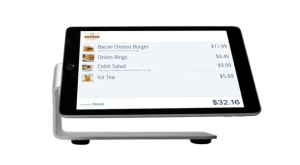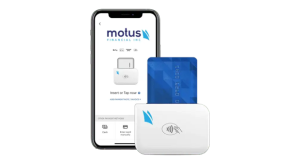How to Set Up Online Payments for Your Website in 15 Minutes
Running an online business comes with many responsibilities, and one of the most important is ensuring your customers can make payments easily and securely. Setting up E-commerce Payments doesn’t have to be a complicated process. With the right tools, you can integrate payment solutions in just 15 minutes, giving your customers a smooth shopping experience and boosting your sales. In this guide, we’ll walk through the steps to get your website ready for online payments without technical headaches.
Why E-commerce Payments Are Essential for Your Business

Accepting online payments is no longer optional. Customers expect fast, secure, and reliable payment options when shopping online. Integrating E-commerce Payments is essential to improve conversion rates, build trust, and ensure smooth operations. A business without seamless online payments risks losing customers to competitors who provide a faster and safer checkout experience.
Having an online payment system also allows you to reach a global audience. Customers from other countries can make purchases with their preferred methods, and you receive payments directly to your business account. Beyond convenience, it ensures that your cash flow remains consistent, enabling better management of inventory, marketing campaigns, and other business expenses.
Choosing the Right Payment Gateway
The first step in setting up E-commerce Payments is selecting a payment gateway. A payment gateway processes transactions securely between your customers and your business bank account. Popular options supported by Motus Financial include Stripe, PayPal, Square, and Authorize.Net.
Choosing the right gateway requires understanding your business needs. Consider the fees per transaction, monthly charges, supported currencies, and integration capabilities. For example, if your store primarily targets mobile shoppers, choose a gateway with excellent mobile compatibility. Businesses selling internationally should verify that the gateway supports cross-border transactions.
Many modern payment gateways combine a merchant account and transaction processing into a single platform, simplifying the setup and reducing delays in receiving payments. This integration is particularly helpful for small businesses or startups looking to launch quickly without technical complexity.
Securing Your Website for Online Payments
Security is crucial for any E-commerce Payments system. Customers must feel confident that their personal and financial information is protected.
Steps to secure your website:
-
Install an SSL certificate for encryption
-
Keep platforms and plugins updated
-
Use strong passwords and multi-factor authentication
-
Display security badges on checkout pages
Regular security checks and monitoring for unusual activity ensure safe transactions and help maintain customer trust.
Setting Up a Merchant Account
A merchant account allows your business to accept credit and debit card payments. While some payment gateways like Stripe or PayPal include a merchant account in their platform, others may require a separate setup with your bank.
Establishing a merchant account involves submitting your business information, verifying your identity, and linking the account to your chosen payment gateway. Once active, it ensures that funds from sales are deposited directly into your business bank account, allowing for quicker access to revenue, smooth operational management, and secure processing of merchant credit card transactions.
A properly configured merchant account supports daily transactions, refunds, chargebacks, and reconciliation efficiently. It becomes the backbone of your E-commerce Payments system, ensuring reliability and consistency in cash flow.
Integrating the Payment Gateway With Your Website
Integration is a crucial step in enabling E-commerce Payments. The process varies depending on the platform you use. WordPress and WooCommerce require installing a gateway plugin and configuring API keys. Shopify, Wix, and Squarespace offer built-in options to connect directly with popular gateways.
Testing the integration is essential before going live. Conduct small transactions to ensure payments process correctly, confirmation emails are sent, and checkout pages work seamlessly—whether you’re using online payment tools or POS Systems. Skipping this step can result in failed transactions and frustrated customers, impacting your business reputation.
Regularly monitoring and maintaining the integration ensures that updates from your website platform or payment gateway don’t cause disruptions. This proactive approach helps prevent unexpected downtime and preserves customer trust.
Offering Multiple Payment Options
Modern customers expect flexibility when paying online. Offering a variety of payment methods can significantly improve conversion rates. Beyond traditional credit and debit cards, customers increasingly prefer digital wallets such as Apple Pay, Google Pay, and PayPal.
For higher-value products, offering Buy Now, Pay Later options can encourage purchases by making it easier for customers to manage expenses. International customers often prefer local payment methods, and supporting these options can broaden your market reach.
Key considerations for offering multiple payment methods:
-
Include major credit and debit cards.
-
Add digital wallets for faster mobile payments.
-
Provide Buy Now, Pay Later options for high-ticket items.
-
Support international payment methods if selling globally.
-
Ensure all options integrate seamlessly with your website.
By accommodating different customer preferences, you increase the likelihood of completed transactions and improve overall satisfaction.
Optimizing the Checkout Experience
A seamless checkout experience is one of the most important factors in reducing abandoned carts. The design of your checkout page should be intuitive, fast, and free of unnecessary distractions.
Minimize the number of steps required to complete a purchase, and ensure all forms are simple and easy to fill out. Clear instructions and error messages prevent confusion, while displaying order summaries and total costs upfront provides transparency.
Even minor improvements, such as pre-filling address fields or including recognizable payment icons, can significantly impact the customer experience. Optimized checkout pages directly contribute to successful E-commerce Payments and repeat business.
Automating Notifications and Invoicing
Automation enhances both efficiency and customer satisfaction. Once your payment system is operational, automate payment confirmation emails, digital receipts, and invoices for subscription-based services.
Automation reduces manual errors and saves time, while providing customers with instant verification of their purchase. This professional approach builds trust and ensures that customers feel confident their payments were successfully processed.
Additionally, automated notifications help maintain better records for accounting and compliance purposes. By integrating automation into your E-commerce Payments system, you improve operational efficiency and strengthen customer relationships.
Read it also:- Accepting Online Payments Through Your Website
Monitoring Transactions for Performance
Monitoring transactions is vital to ensure the smooth operation of your E-commerce Payments system. Regular review of transaction logs helps identify issues early, such as failed payments or suspicious activity.
Analyzing transaction patterns also provides insights into peak sales periods and preferred payment methods. Businesses can use this data to optimize marketing strategies and customer experience. Generating monthly reports helps track revenue trends and supports better financial planning.
Consistent monitoring guarantees that your online payments continue to function seamlessly, reducing errors and increasing customer satisfaction.
Mobile Optimization for Payments
Mobile commerce accounts for a significant portion of online shopping. If your E-commerce Payments system is not mobile-friendly, you risk losing a large segment of potential customers.
Ensure that your checkout pages are responsive on all devices, and streamline forms for mobile users. Supporting mobile wallets like Apple Pay and Google Pay simplifies the process for customers on smartphones or tablets, encouraging faster completion of transactions.
Mobile optimization is essential for modern e-commerce businesses looking to maintain high conversion rates and a competitive edge.
Addressing Customer Concerns
Customers often hesitate to complete online transactions due to safety or convenience concerns. Addressing these concerns proactively can prevent abandoned carts.
Highlight encryption, secure gateways, and fraud protection measures on your checkout page. Clearly display accepted payment methods, provide information on refund policies, and explain expected processing times.
Transparency reassures customers and increases their likelihood of completing payments. Businesses that proactively address customer concerns see higher satisfaction rates and more successful E-commerce Payments.
Troubleshooting Common Payment Issues

Even after setup, occasional payment errors may occur. Being prepared to handle these issues is essential for maintaining customer trust.
Common problems include card declines due to insufficient funds, network interruptions, or currency conversion issues for international customers. Businesses should provide alternative payment methods, clear error messages, and a support channel to resolve issues quickly.
Proactively troubleshooting and responding to payment issues ensures that customers can complete purchases smoothly, enhancing the overall perception of your business.
Read it also:- How Payment Processing Online Simplifies Transactions for E-commerce
Advanced Strategies for E-commerce Payments
For businesses looking to optimize further, advanced strategies can enhance efficiency and customer satisfaction. Subscription billing allows recurring payments to be automated, ideal for membership or service-based businesses. Allowing returning customers to save payment methods can speed up checkout, reducing friction and improving repeat sales.
Integrating fraud analytics or AI-driven tools can help detect suspicious activity before it affects your business. Offering region-specific payment methods for international customers also improves conversion rates and expands your market reach.
These strategies take E-commerce Payments beyond basic functionality, transforming them into a tool that drives growth and customer loyalty.
Ready to simplify your online payments? Our team can help you integrate secure, reliable E-commerce Payments quickly and efficiently.
Book a consultation today or Connect with us for personalized guidance to get your website payment-ready in minutes.
Final Thoughts
Setting up E-commerce Payments doesn’t have to be complicated. By choosing the right payment gateway, securing your website, offering multiple payment options, optimizing checkout, automating notifications, and monitoring transactions, you can start accepting payments quickly and efficiently.
Adding mobile optimization, troubleshooting solutions, and advanced features ensures your system is future-ready. Every step improves the customer experience, boosts conversion rates, and strengthens your online business.
Take action today and make your website a hub for smooth, secure, and fast online transactions. With the right approach, you can have your online payments live in as little as 15 minutes.




 Our POS systems are designed to streamline in-store transactions. With features like inventory management, sales reporting, and customer tracking, our POS solutions help you run your business more efficiently. Our terminals are compatible with various payment methods, including chip cards, contactless payments, and mobile wallets.
Our POS systems are designed to streamline in-store transactions. With features like inventory management, sales reporting, and customer tracking, our POS solutions help you run your business more efficiently. Our terminals are compatible with various payment methods, including chip cards, contactless payments, and mobile wallets.



